Azuchi-Oshima Island and Ikitsuki Island are two islands with a history of whaling
 Ikitsuki Island Museum Exhibit
Ikitsuki Island Museum Exhibit
Azuchi-Oshima Island (locally simply called Oshima Island) and Ikitsuki Islands in Hirado have long been closely associated with historical whaling culture.
In the 18th century, whaling became a major industry on the islands and towns formed around the bases of commercial whaling groups.
Modern whaling was never practiced in Hirado so it’s all about the history. When you visit the island, you can see many traces of the historical whaling activities such as rare historical artifacts that have been carefully preserved.
 Ikitsuki Island Museum Exhibit
Ikitsuki Island Museum Exhibit
Whaling on Ikitsuki Island began in earnest around 1725.
After 1733, whaling shifted from harpooning to netting, and subsequently the whaling activities expanded all along the Kyushu coast.
 Ikitsuki Island Museum Exhibit
Ikitsuki Island Museum Exhibit
After the mid-19th century, the whaling groups were discontinued as the catch of whales declined due to modern whaling activities by Western whaling ships.
However, the expertise and knowledge of large-scale fishing operations that had been developed through whaling were used in the development of oceanic net fishing.
In 1882, there were some small renewed efforts of whaling around the Hirado Strait using guns and harpoons but this also stopped around 1947.
The whaling culture in Hirado
 Cliffs from which the whales were spotted
Cliffs from which the whales were spotted
The main purpose of whaling in the old days was the for the production of whale oil.
Whale oil was initially used to light lamps, but by the 18th century, the demand for whale oil increased even more as it became a popular pesticide for rice cultivation.
Every part of the whale was used: the baleens were used to make springs for various crafts, the tendons were used for a tool to willow cotton, and the bones were pulverized for use as fertilizer on the fields.
 Whale memorial at Saikyo-ji Temple
Whale memorial at Saikyo-ji Temple
Whales were utilized to such an extent that almost nothing was thrown away, and whatever was left was carefully offered at special whale memorials.
Some of the whale memorials that were dedicated by whaling groups still remain at Saikyo-ji Temple and Midorigaoka Shrine in Hirado city centre.
 Saikyo-ji Temple
Saikyo-ji Temple
Saikyo-ji Temple with the vermillion red pagoda is a well-known temple and revered as sacred ground related to the famous monk Kukai.
Traces of the Masutomi whaling group on Ikitsuki Island
 Misakiura Beach Park
Misakiura Beach Park
The Masutomi whaling group on Ikitsuki Island, which began whaling in 1725, was the largest organization in Japan at its peak in the early 19th century, employing 3,000 people.
 A ship in the playground
A ship in the playground
The area where nets used for whaling were hung out to dry has now been developed into a fun family park. In the park, play equipment in the shape of a large ship has been built overlooking the sea
 The place where the nets were hung out to dry
The place where the nets were hung out to dry
The area where nets were hung is covered with stones to make it easier for the nets to dry. From here you can enjoy a beautiful view of the ocean and it is easy to imagine the large whaling nets hanging out to dry.
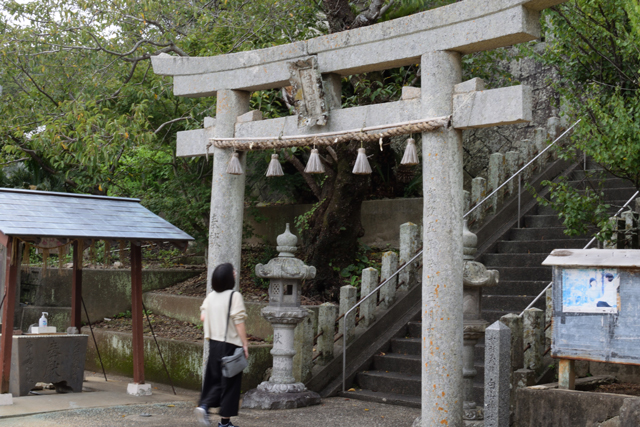 The torii gate of Hakusan Shrine
The torii gate of Hakusan Shrine
On Ikitsuki many whaling related historical sights remain. Among them are the gorgeous residence of the Masutomi clan, the site where the whale processing facilities were located, the place of the watchtowers, as well as the torii gate that was built and dedicated by the Masutomi clan.
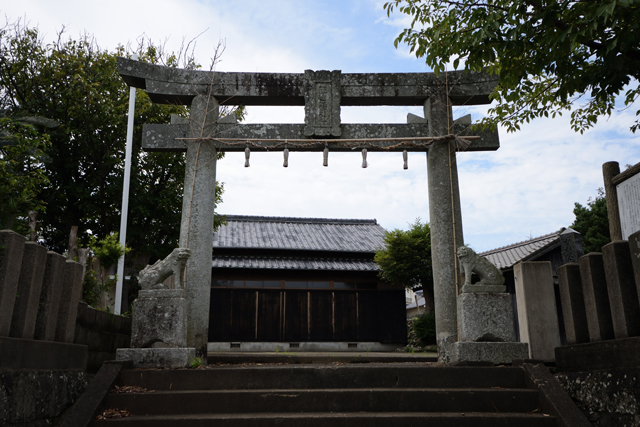 Torii gate of Sumiyoshi Shrine
Torii gate of Sumiyoshi Shrine
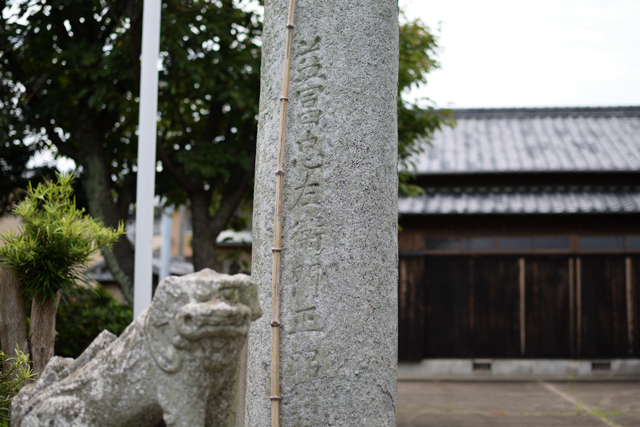 The gate bears the name of the Masutomi clan who had the torii gate built.
The gate bears the name of the Masutomi clan who had the torii gate built.
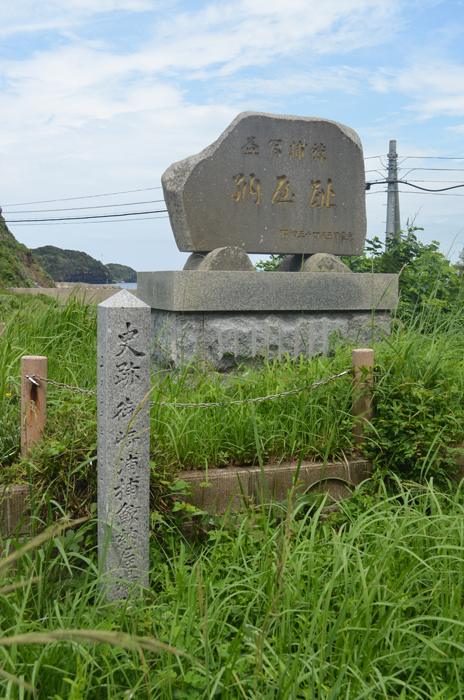 The site of the former whaling base.
The site of the former whaling base.
The Masutomi clan sent their whaling expeditions far and wide, contributing to the development of whaling culture in Japan.
On Ikitsuki Island, the site of the former whaling base can still be found. This area is still called Nayaba after the many different facilities that were located here, one for each step of the manufacturing process.
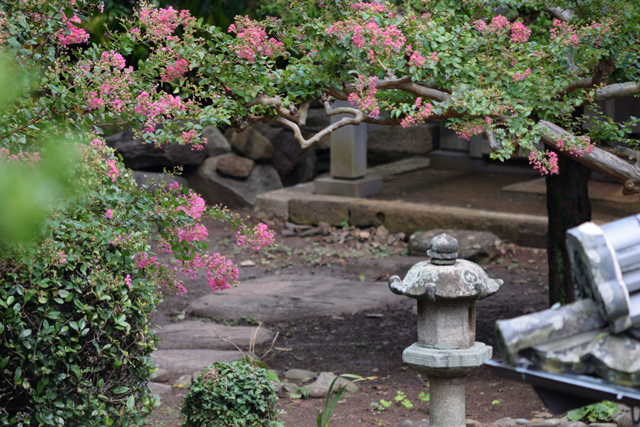 Family house of the former Masutomi whaling group
Family house of the former Masutomi whaling group
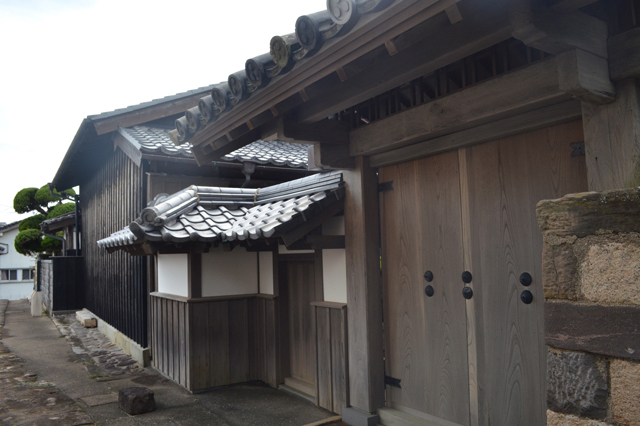 Family house of the former Masutomi whaling group
Family house of the former Masutomi whaling group
Traces of the whaling culture on Azuchi-Oshima Island
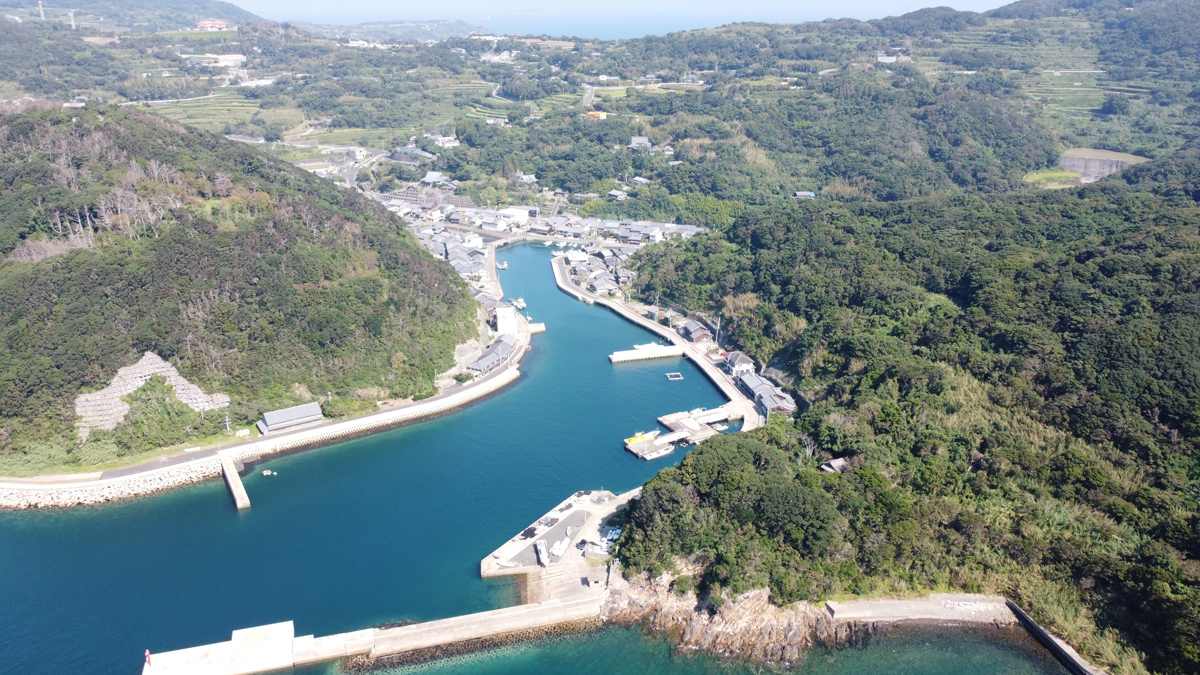
Azuchi-Oshima Island
Located north of Ikitsuki Island is Azuchi-Oshima Island, where whaling was also actively practiced and a thriving fishing village was formed.
On Oshima Island, you can also still find many places that tell the story of whaling which was managed by the Inomoto clan here.
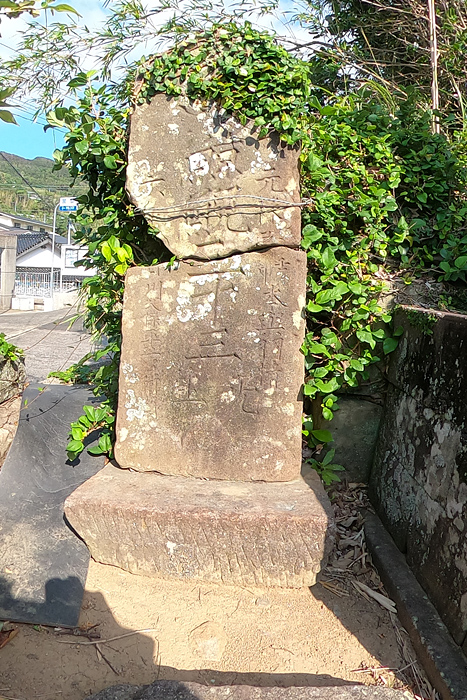 Whale Memorial
Whale Memorial
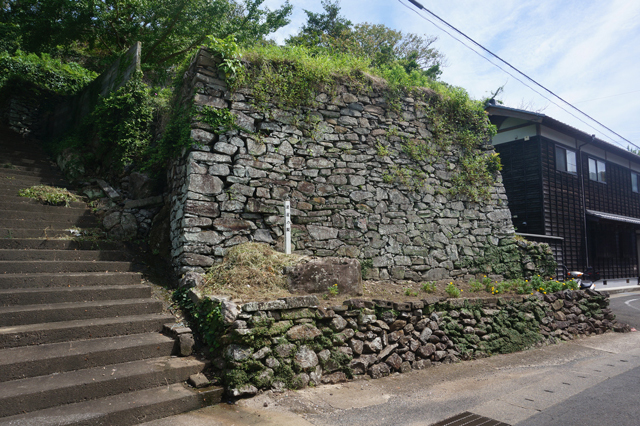 Old stone walls line the village
Old stone walls line the village
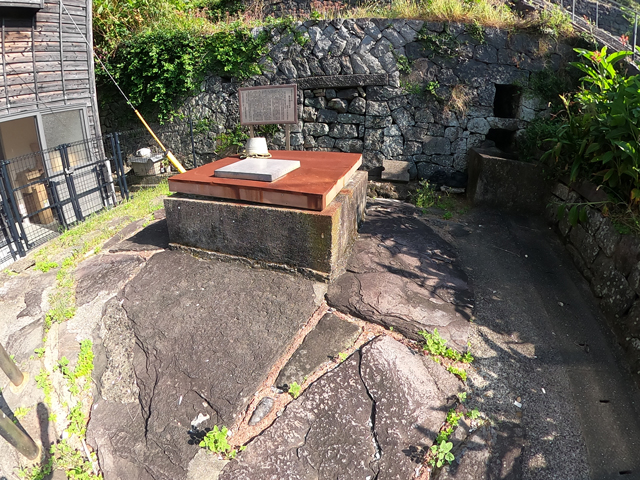 A well at the site of the old town hall
A well at the site of the old town hall
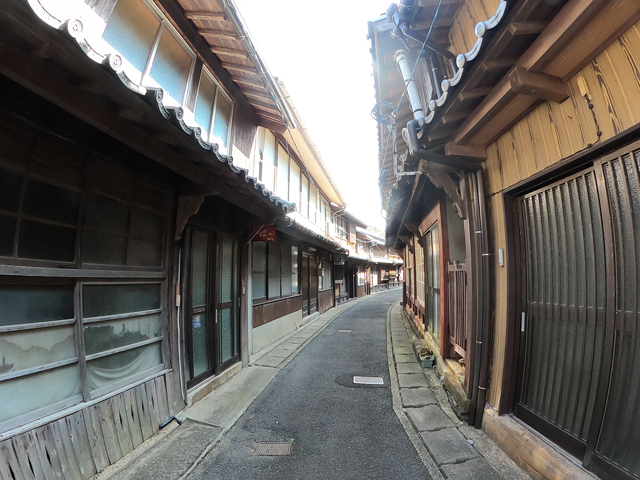 The traditional townscape of Konoura port
The traditional townscape of Konoura port
The village of Konoura, where the Inomoto clan was based, has been designated as an important national heritage district for its traditional houses.
The village is a port town built around a deep natural bay. Following this natural coastline, the main street is lined on both sides with dense rows of buildings dating from the 19th to the early 20th century. The temples, shrines, and cemeteries that surround the village on higher ground complement the historical town.
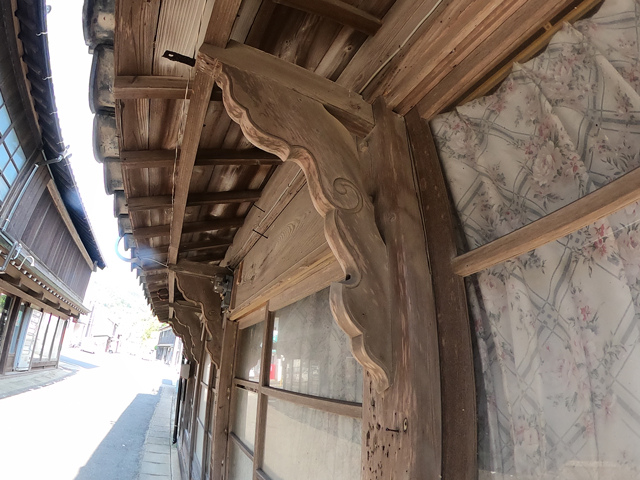 The traditional townscape of Konoura port
The traditional townscape of Konoura port
The port village of Konoura is a unique and valuable place that tells its history from the start and end of the Inomoto whaling group to its development as an early modern port town.
Passing down the culture of historical whaling to the present day
The Ikitsuki Island Museum (Shima-no-Yakata) is located right next to Ikitsuki Bridge. It exhibits fascinating historical documents and artifacts related to the history of whaling in Hirado.
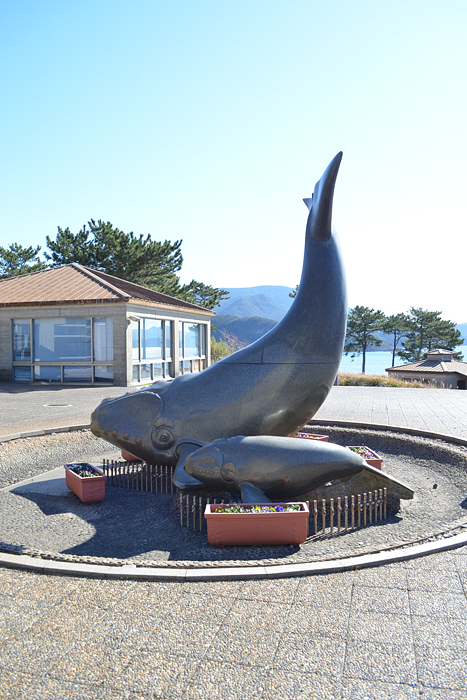 Statue of a Right Whale in front of the Ikitsuki Island Museum
Statue of a Right Whale in front of the Ikitsuki Island Museum
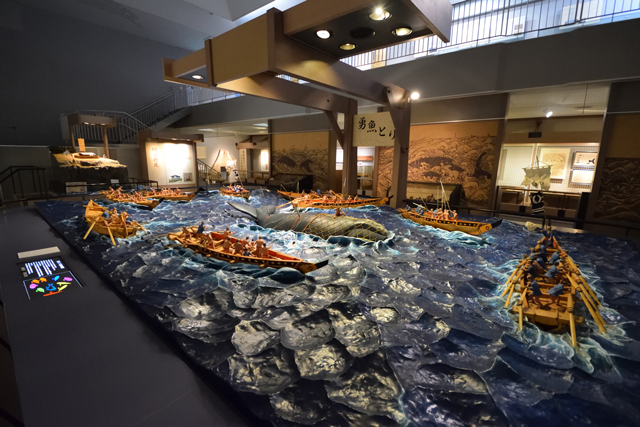 Ikitsuki Island Museum Exhibit
Ikitsuki Island Museum Exhibit
A statue of a whale in front of the entrance welcomes visitors to the Ikitsuki Island Museum. Inside, a huge whale skeleton suspended from the ceiling is a sight to behold. The moving diorama that re-enacts the method of whaling during that era is also well worth seeing!
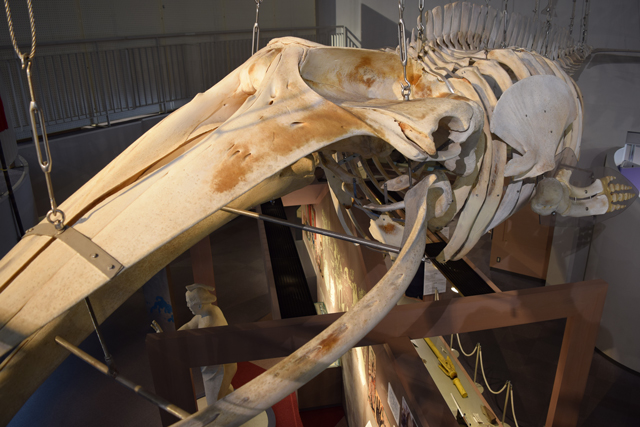 Ikitsuki Island Museum Exhibit
Ikitsuki Island Museum Exhibit
Other exhibits include the display of historical tools used for whaling and valuable documents that tell the history of whaling. From the exhibits visitors can learn about the changing whaling methods over time.
This is a great place to start your journey by first learning about historical whaling before continuing on to enjoy the remaining physical sites on Ikitsuki that continue to tell this fascinating history.

